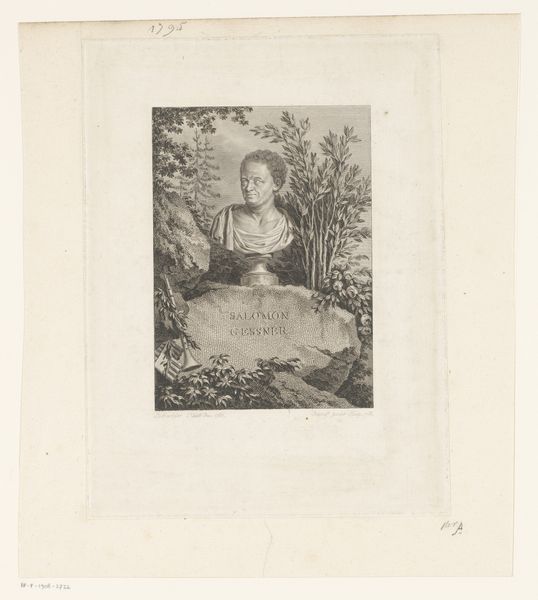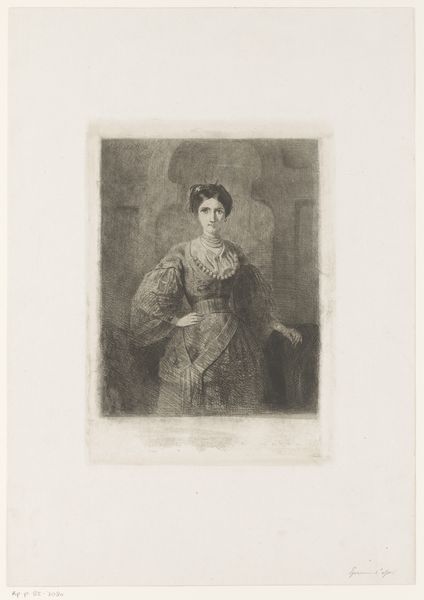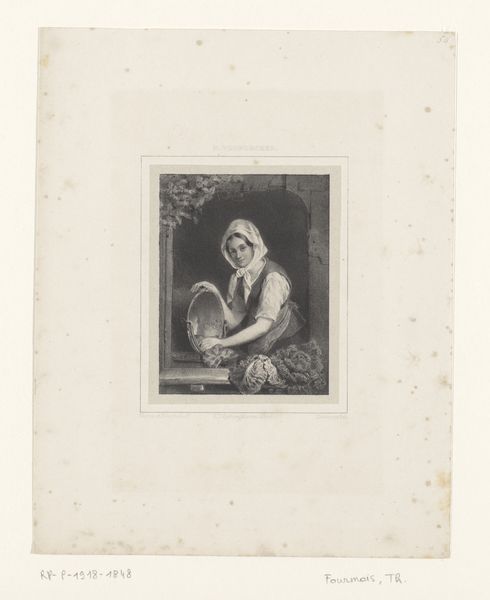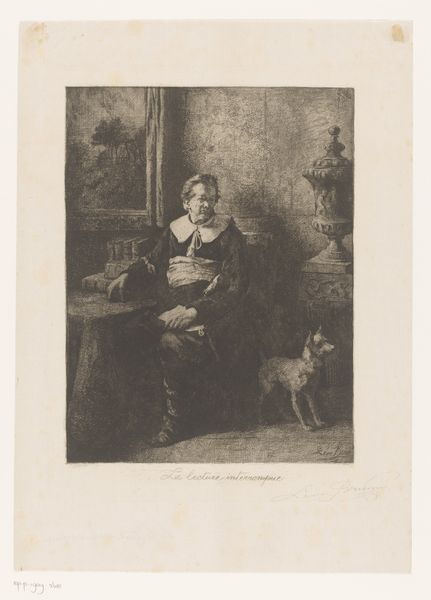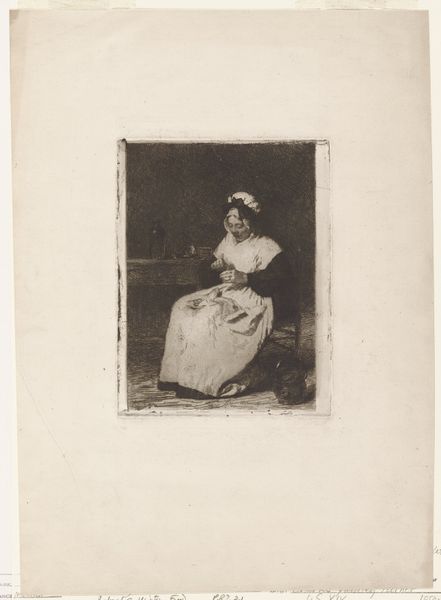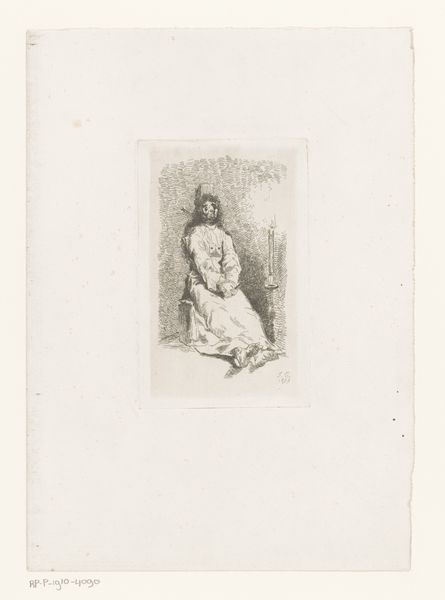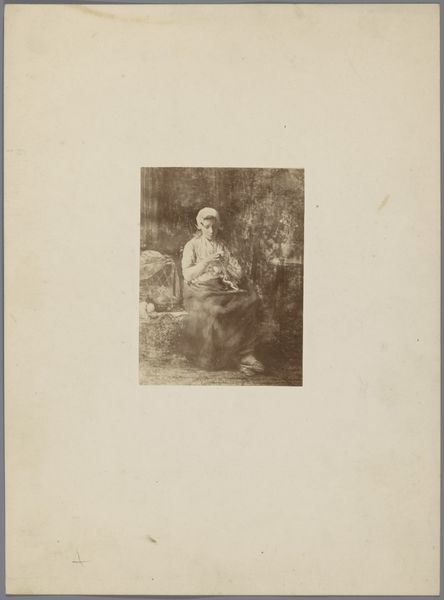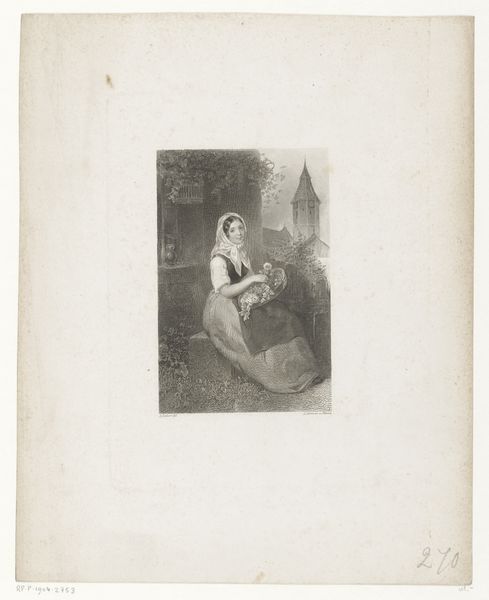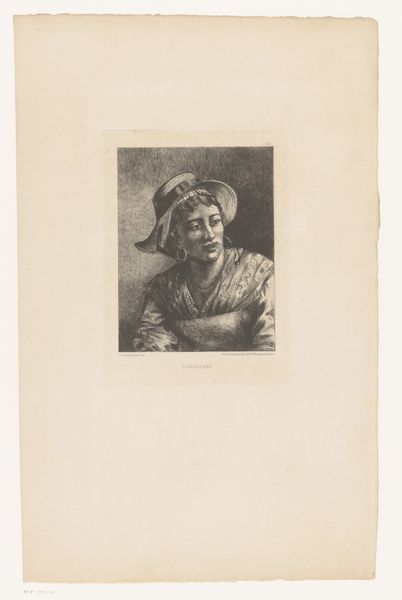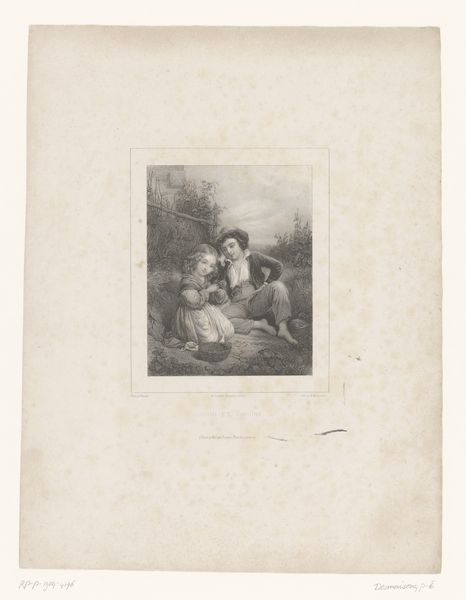
print, etching, engraving
# print
#
etching
#
figuration
#
history-painting
#
engraving
Dimensions: height 165 mm, width 125 mm
Copyright: Rijks Museum: Open Domain
Curator: This engraving by Joseph Coomans, titled "Young Woman Removing a Thorn from a Lion's Paw," produced sometime between 1826 and 1889, presents us with a captivating tableau. Editor: Yes, it’s immediately striking—a study in contrasts. The rough texture of the etching creates a dramatic effect. The juxtaposition of the refined woman and the wild lion is quite compelling. Curator: Coomans has meticulously employed engraving and etching to create depth and texture. Notice the careful cross-hatching used to delineate form and create shading. It almost gives a photographic crispness to the central scene. Editor: And that scene itself speaks volumes. Consider the power dynamics—a woman, seemingly unafraid, attending to a creature symbolic of strength and even aggression. Is it a commentary on civilization taming the wild, or perhaps a reflection on the unexpected vulnerability in power? Look closely at the background figures staring intently at her, as though in disapproval or protest. Are they the patriarchy made manifest? Curator: Such symbolic readings are certainly plausible. However, structurally, the artist uses light and shadow to direct our focus, drawing our eye from the bright figure of the woman to the shadowed audience looming behind, and then back to the central act. He leads the viewer into a study of empathy through the interplay of gazes within the piece. Editor: I would agree about empathy being at play here. Given the period, shouldn’t we examine what this image does regarding European identity and colonization? Is the lion a symbol of Africa or some other place "tamed" or "civilized" by a Western hand, for better or worse? The act of removing the thorn almost plays out as a myth-making opportunity or some sort of moral instruction. Curator: It certainly invites discussion on the complex and often problematic narratives that emerge from that period. One of the most powerful choices Coomans makes in the artwork is to pose the scene in a vignette to soften the sharp edges and draw us further into the imagined space. Editor: I leave this work with so many questions about this power dynamic that asks, who is serving whom? Curator: For me, the power rests in its structure, its deft manipulation of light and shadow, allowing it to transcend any easy interpretation.
Comments
No comments
Be the first to comment and join the conversation on the ultimate creative platform.
